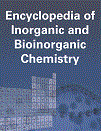Actinide Polyoxometalates
Abstract
Actinide polyoxometalates (POMs) are actinide oxide clusters built from actinides in their pentavalent and hexavalent oxidation states, and are currently restricted to clusters containing U(VI), Np(V), and Np(VI). A large family of uranyl peroxide clusters has been developed over the past 12 years that contain from 16 to 124 uranyl ions, with diameters as large as 4 nm. Most of these clusters are anionic cages, although a few are open crown- and bowl-shaped clusters that are also anionic. In all cases, the outer and inner surfaces of uranyl peroxide clusters are stabilized by the presence of oxygen atoms that are part of uranyl ions, and that are strongly bonded to a U(VI) cation. These clusters all feature peroxide bridges between uranyl ions, where the peroxide is bidentate to both uranyl ions, as well as several other bridges that include hydroxyl, pyrophosphate, oxalate, nitrate, phosphate, phosphite, and others. Uranyl peroxide clusters form spontaneously in water at room temperature in minutes to weeks when a source of uranyl is combined with hydrogen peroxide and an alkali base, and the assembly mechanism involves a base-promoted breakdown of peroxide that encourages linkages between uranyl polyhedra. Uranyl peroxide cages are very soluble in water and have several potential applications in nuclear fuel cycles. A small number of nonperoxide actinide POMs are also known, and these include a wheel-shaped uranyl vanadyl sulfate cluster that was synthesized in an ionic liquid.



